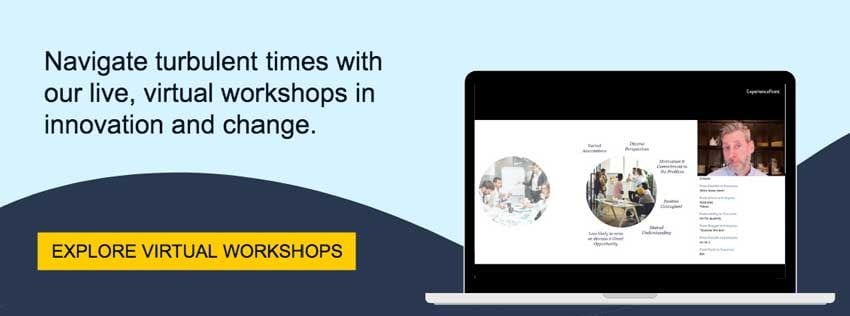A human-centered design approach to guiding employees through the pandemic
In this time of business upheaval, it may be difficult for leaders of organizations to extend their focus beyond meeting payroll, making loan payments and honoring their vendor contracts. Yet leading your people through the crisis, and instilling a sense of calm in every team member, must be granted equal priority.
In recent weeks, 10 million people have made new unemployment claims, and your employees are likely wondering if they will be next. That fear, coupled with feelings of isolation and frustration related to working at home, can both heighten anxiety and lessen productivity.
They will be looking to their managers and company leaders to guide them, and to calm their fears about the future. Regardless of the leadership style you’ve come to embrace, the time has come to refocus your strategy in one direction: leading through empathy.
Empathy is rarely the first sensibility that comes to mind when envisioning strong leaders. It is a word tied to emotion that some might confuse with weakness, or with a lack of necessary fortitude to make tough decisions. Yet in times of crisis such as these, empathy can be the most vital and powerful tool a leader can employ.
What does it mean to lead through empathy?
At ExperiencePoint we talk a lot about empathy, because it is at the core of human centered design. It is impossible to know what customers need, or to brainstorm innovation solutions to meet those needs, until you take the time to build empathy for their predicament.
During this pandemic, think of your employees as the customer. Before you can come with a plan to guide them through these trying times, you must first observe them as they figure out how to navigate the uncertainty of their future.
Observation is the key to empathy. We must never assume to understand what someone needs. While remote working environments mean that these observations will mostly take place in Zoom meetings, through Slack posts and through feedback from managers and individual employees, we can only build empathy by watching, listening and asking the occasional question.
As you make these observations, ask yourself:
· What obstacles are my people facing?
· What questions are they asking?
· Which of their needs aren’t being fulfilled?
· What can I do to help?
Once you’ve gathered these observations, share them with your leadership team, then work together to brainstorm a response strategy that includes immediate messaging, as well as long-term communication and support.
You can never talk too much
In times of crisis, transparency and constant communication from an empathetic leader can be a best approach to easing uncertainty and slowing the rumor mill. Even if your truth is harsh, involving layoffs, budget cuts, and client losses — being upfront about what the future holds will give employees a small sense of control in the midst of all the chaos. And they will appreciate you for being honest.
Further, an empathetic leader will think creatively about how to mitigate any negative impact a crisis could have on their people. For some business leaders, that might mean tapping into company reserves, cutting bonuses, or delaying purchases to keep staff employed. For others, it could be creating incentives and events to boost morale, such as offering to cover food deliveries for all-hands meetings, hosting virtual game nights, or simply acknowledging that it’s okay to take time every day to spend with family.
All of these empathetic efforts will help to ease your employees’ fears and build their loyalty to the company. They will also help them refocus on the work at hand, and inspire them to find innovative ways to keep the business moving ahead.
At the end of this tough road, your employees will remember how you stepped up to guide them. Your choice to lead through empathy will not be forgotten, and will define your company’s perception of you for years to come.
